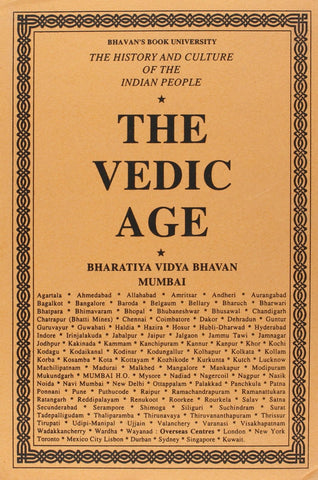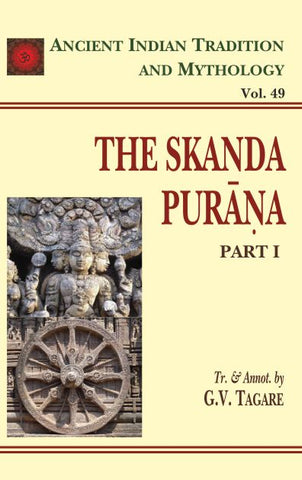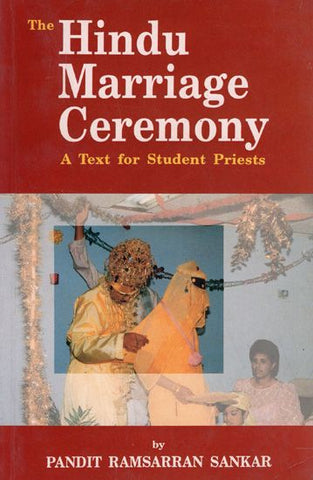Your cart is empty now.
Of the sixteen samskaras which encompass a Hindu life the last one is performed for the dead by their sons or grandsons or relatives. Many passages in the Puranas and Dharmasastras extol the role of the son in the life of a devout Hindu. The present book deals with the rite of Sraddha and vindicates the popular belief that Sraddha, being an important topic, forms an integral part of Hindu Dharmasastra. The belief in the after-death survival of deceased ancestors and their separate world belongs to the Indo-Iranian period and as such is pre-Vedic. Ancestor worship for one's prosperity, and continuation of one's race, is as old as the Rgveda.
About The Author
DR. R. C. PRASAD was a University Professor of English at Patna University where he taught for about three decades. He was an eminent author, translator and editor. He had a good number of books to his credit. During which he wrote scores of books, including biographies and translations, the most outstanding of which is his prose rendering of Shri Ramacharitamanasa. Dr Prasad has also translated The Vivaha- The Hindu Marriage Samkaras and The Upanayana: The Hindu Sacrament Samskaras which are companion volumes to this book.
In offering this book to the purohitas and householders our intention is not to rival the Books of the Dead, the Tibetan and the Egyptian. In the 'Commentary' on The Tibetan Book of the Dead, Chogyam Trungpa communicates ’the message of the book' in the following words:
There seems to be a fundamental problem when we refer to the subject of The Tibetan Book of the Dead. The approach of comparing it with The Egyptian Book of the Dead in terms of mythology and lore of the dead person seems to miss the point, which is the fundamental principle of birth and death recurring constantly in this life. One could refer to this book as "The Tibetan Book of Birth". The book is not based on death as such but on a completely different concept of death. It is a "Book of Space". Space contains birth and death; space creates the environment in which to behave, breathe and act; it is the fundamental environment which pro- vides the inspiration for this book.
Our approach to the dead is not that of a non-dualist; the Advaitavadin's tendency to look upon births and deaths as an identical phenomenon, the one giving birth to the other, is not practicable on the terrestrial plane by a common householder to whom death is death, the loss of a person's life. To a common householder such ideas as ’Death is the soul's liberation from the prison-house of the body, 'Death is casting off worn-out bodies and entering into others which are new', ’Birth and death apply to everybody constantly, at this very moment, etc. hardly console one left behind by a dead person. Our daily living situation refuses to believe that the dead will ever return or that death is a renewal of life. We treat the dead as dead and, inspired by a sense of gratitude, pay whatever homage and largesse we can afford. Elaborate rituals, which include prayers for the peace of the deceased and offerings of material objects for use by the disembodied soul, are recommended by the dharmasastra.
It is not surprising, therefore, that the ’Hindu Book of the Dead, like the Tibetan, opens with the kinsfolk surrounding the person on their deathbed and chanting inspiration-prayer calling on the Lord for rescue. The Tibetan Book of the Dead insists that at the time of one’s death, one should always call on the Buddhas and the Bodhisattvas for rescue. One should make material and mental offerings to the Three Jewels, and holding fragrant incense in one’s hand, say these words with the intense power of concentration.’ The kinsfolk of the dying Hindu does not belittle the importance of this simple ritual and recite scriptural texts and sing bhajanas. In most cases, when the dying man grows faint with fear, terror and bewilderment, the hymns are sung, episodes from the epics recounted, and suktis from the sastras read. The purpose of all this is not only to fill the dying with fortitude but also to remind him that ’now what is called death has arrived. You are not alone in leaving this world, it happens to everyone, so do not feel desire and yearning for this life. Even if you feel desire and yearning you cannot stay, you can only wander in samsara. The Tibetan Book of the Dead aptly describes the psycho- logy of the dying man on hearing the prayers offered for his peaceful end:
Now when the bardo of dharmata dawns upon me, I will abandon all thoughts of fear and terror, I will recognise whatever appears as my projection and know it to be a vision of the bardo; now that I have reached this crucial point I will not fear the peaceful and wrathful ones, my own projections.
For his life after death prayers and gifts are offered so that he may not have to suffer the dearth of anything, material or spiritual. Gifts are offered with rare generosity; the person performing the last rites is encouraged to loosen his purse strings and offer whatever gifts he can in cash or in kind, the gifts which are meant to enable the dead to be ferried from the world of karmic miseries to the world of Elysian bliss or to the abode of the blessed. A locus classic in the Garuda Purana lauds liberality in making gift—offerings:
By offering gifts of wealth to Brahmanas, the sons, in fact, prepare for their salvation along with sons, grandsons and great-grandsons. What is given to father will be required a hundredfold; to a mother a thousandfold; to a sister a hundred thousandfold and to a brother manyfold.
Written with ungrudging assistance given by Digvijay Narayan Singh, a scholar par excellence, the following pages deal with the rite of sraddha and vindicate the popular belief that sraddha, being an important topic, forms an integral part of Hindu dharmasastra. "The belief in the after—death survival of deceased ancestors and their separate world (pitr-loka)", observes a commentator, "belongs to the Indo—Iranian period and as such is pre—Vedic . . . Ancestor-worship for one’s prosperity, continuation of one’s race is as old as the Rg Veda.’ It appears that the ritual of sraddha prescribed by Agni, Garuda, Kurma, Padma, and Visnu Puranas practically follows the same procedure as given in the Grhyasutras and smrtis of Manu and Yajnavalkya. "If the author of a Purana follows a particular sut1•a’j the commentator adds, "he prescribes the procedure of his sutra. For example, in the present case, the procedure of sraddha given in the Narada Purana shows much resemblance to the details given in the Sraddha Sutra of Katyayana (which by the way has so much similarity with the procedure of sraddha given in the Yajnavalkya Smrti).”
Grateful thanks are due to Mr J.P. Jain of Messrs. Motilal Banarsidass Publishers Private Limited, Delhi, for initiating this purposeful project which began with a description of the Hindu marriage system. This volume completes the series, ending as it does with a description of the last samskara. As soon as the players have played their seven parts the eighth is played by the descendants, preferably by the son of the deceased. What begins with the garbhadhana (now outlandish to many) comes full circle with the completion of the sraddha.
The samskaras do not leave out any of the seven stages or any of the turning points in the life of an orthodox Hindu. It is considered meritorious to remember the dead and pay the deceased ancestors due homage and obeisance.
Cordial thanks are also due to several pandits, purohits, and priests who have preceded me and by their writings paved the way for this little volume.
Of the sixteen samskaras which encompass a Hindu life the last one is performed for the dead by their sons or grandsons or relatives. Many passages in the Puranas and dharmasastras extoll the role of the son in the life of a devout Hindu; in that of a non-believer and heretic, a relative is as important as a son insofar as the last rites are concerned. Manu's views, widely known and held by those professing orthodox Hinduism, are quite explicit on this issue:
akrta va krta vapi yam vindetsadrsatsutam
pautri matamahastena dadyatpindam hareddhanam
putrena lokanjayati pautrenanantyamasnute
atha putrasya pautrena bradhnasyapnoti vistapam
punnamno narakadyasmattrayate pitaram sutah
tasmatputra iti proktah svayameva svayambhuva
"Through that son whom a daughter, either not appointed or appointed, may bear to a husband of equal caste, his maternal grandfather has a son's son; he shall present the funeral cake and take the estate. Through a son, he conquers the worlds, through a son's son he obtains immortality, but through his son's grandson, he gains the world of the sun. Because a son delivers (trayate) his father from the hell called Put, he was therefore called put-tra (a deliverer from Put) by the Self-existent (Svayambhu) himself."
In the twenty-ninth chapter of the Garuda Purana, we are told, though in different words, that there is no salvation for a man without a son; he can never attain heaven without a son. The Purana goes a step further when it declares that one must obtain a son somehow. In the forty-third chapter 'On Performing a Sraddha' of the Garuda Purana a persona of the author, the Lord, is made to proclaim thus:
Either the mother or a kinsman can perform the expiatory rite on behalf of a boy less than twelve but above four. Boys of less than four years of age can never be guilty or sinful. Even the king cannot punish them. There is no expiatory rite prescribed for such boys, in the sastras.
That the sraddha, if performed according to the dharma- sastras, led to the everlasting peace of the departed soul and liberated it from karmic bonds and from the cycles of birth and death is widely recognized. This explains why so much attention is paid to this ritual by the ancient seers. Some of them give a detailed description of the funeral rites and subsequent rituals at the crematorium or at home. In the Narada Purana, for example, one finds a description of the sraddha rites as well as qualifications of the Brahmana invitee to the rituals. Realizing the pre-eminence of the last rites among the samskaras, the law-givers also lay down some mandatory disqualifications of an invitee as well as rules with regard to the sraddha-tithis.
According to the Narada Purana, only a brahmana who has some special merits can be invited for a sraddha. He should be well-versed in the Vedas, devoted to Visnu and abider by his own conventional conduct of life, born of a good family and be of quiet nature. Among the characteristics of such a brahmana are also his dispassion and freedom from hatred. "He should be an expert in the interpretation of the Puranas", says the Narada Purana. "He must be conversant with the madhu verses and must have studied the tri-suparna. He should be engaged in the worship of the deities and be adept in the principles of smrtis. He must be a pastmaster in the knowledge of the principles of the Upanisads. He must be interested in the welfare of all worlds. He should be grateful and richly endowed with all good qualities. He must be engaged in advising others by recounting good scriptural texts. These are the Brahmanas who can be employed in a sraddha."
As for the disqualifications of an invitee, the same (Narada) Purana says:
One who is physically deformed, wanting in a limb or by having a superfluous limb, a miser, a sickly per- son, a leper, one with deformed nails, a person with long suspended ears, one who has broken his religious vows, a person whose livelihood is the reading of the stars (i.e. astrology), he who professionally bums corpses, a person indulgent in heretical arguments, the younger brother who marries when the elder brother is yet a bachelor; a professional worshipper of idols, a rogue, a person who speaks ill of others; a hot-tempered person, a knave, the village priest, one who is interested in unholy scriptures, one who is devoted to and depen- dent on other men's food, one who supports the son of a sudra woman, the paramour of a sudra woman, kundas and golakas (i.e. bastards born of adultery when the husband is alive or when the husband is dead), one who performs yajna of those who are not eligible to perform it, a man of fraudulent conduct, a man who shaves off his head without purpose, one who is enamoured of another man's wife or wealth, one who is devoid of devotion to Siva, those who sell the Vedas (i.e. accept fee for recitation and teaching of the Vedas), the sellers of vratas, those who sell smrtis and man- tras, professional musicians, composers of poems, those who maintain themselves by means of practising medicine for money, one who is engaged in decrying the Vedas, arsonists of villages and forests, one who is over pas- sionate, one who sells intoxicating beverages and one who indulges in deceitful arguments. All these should be excluded scrupulously from the sraddha.
He should invite the Brahmana the previous day or on the same day. The Brahmana who is invited should maintain celibacy and conquer his sense organs.
As soon as a competent brahmana gifted with all the qualifications laid down here has been discovered and found willing to supervise and direct the sraddha rituals, the householder, with his sense-organs duly subdued, should take the darbha grass in his hands and invite the intelligent brahmana with following words: "0 excellent Sir, you should do me a favour and accept my invitation for sraddha." On his part, the householder is required to get up early in the morning and perform the daily morning routine. The learned man should perform the sraddha at the hour called Kutapa (i.e. the eighth muhurta or five hours and thirty-six minutes after sunrise). That hour in the eighth kala (muhurta) of the day when the sun begins to be less fierce is called the Kutapa. That which is given to the pitrs at that time is of everlasting benefit. The afternoon is the time granted to the pitrs by the self-born deity (god Brahma). Hence, the kavya (oblations to the pitrs) should be given by excellent Brahmanas only at that time. If the kavya is offered along with the monetary gifts at the wrong hour it should be known as belonging to the raksasas. It never reaches the pitrs. The kavya offered in the evening too becomes something pertaining to the raksasas. The giver as well as the partaker of food falls into hell.
It should be borne in mind that the sraddha rituals are but a form of ancestor worship, which is based on the belief in the after-death survival of the deceased ancestors and their residence in a particular region called pitr-loka. It is an important topic and forms an integral part of Hindu dharmasastras, This belief is pre-vedic as it dates back to the Indo-Iranian period. Ancestor worship was deemed essential for the continuation of one's race and the prosperity of one's family.
There is an interesting dialogue between Samsapayana and Suta in the Vayu Purana which has sraddha for its theme. Samsapayana, inquisitive to his fingertips, thus questions the wise Suta:
What sraddhas are to be offered to the pitrs? How do these sraddhas reach the pits-the sraddhas that are offered uttering the names of father, father's father and great-grand father-against the rice-balls (pindas)? How are they (pitrs), if stationed in hell, competent to grant benefits? Who are these called by the name pitrs? Whom shall we worship again? We have heard that even devas in heaven worship the pitrs.
| PREFACE | ix |
| INTRODUCTION | 1 |
| THE ANTYESTI SAMSKARA | 43 |
| APPENDICES | |
| Appendix I | 67 |
| Appendix II | 71 |
| Appendix III | 91 |
| Appendix IV | 95 |
| GLOSSARY | 103 |
CONTENTS
PREFACE
INTRODUCTION
THE ANTYESTI SAMSKARA
APPENDICES
Appendix I
Appendix II
Appendix III
Appendix IV
GLOSSARY



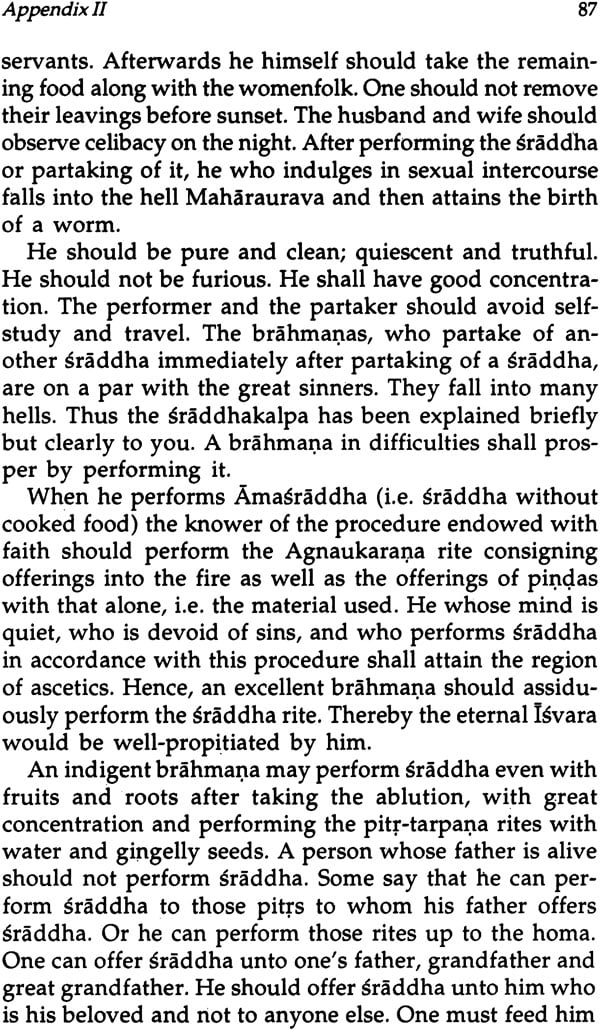
Delivery and Shipping Policy
- INTERNATIONAL SHIPPING
- Rs.1000-1100/kg
- ESTD. Delivery Time: 2-3 weeks (depending on location)
- Bubble Wrapped with Extra Padding
- NATIONAL SHIPPING
- NCR: Rs. 30/half kg
- Standard: Rs. 80/half kg
- Express shipments also available on Request
- ESTD. Delivery Time: Ranging from 1-4 days up to 7 business days (Depending on your choice of Delivery)
- TRACKING
- All orders; national or international, will be provided with a Tracking ID to check the status of their respective orders
- Depending on the Shipping Service, Tracking ID may be used on their respective tracking portals
Frequently Asked Questions (FAQs)
Domestic Shipping: 3-4 Days (after shipping)
International Shipping: 1-2 weeks (based on your location)
You will receive an email once your order has been shipped or you can email us if you didn't receive tracking details (info@mlbd.co.in)
Every book that we sell is the latest edition except all the rare books
Yes, we do provide free shipping, only on domestic orders (within India) above Rs.1500


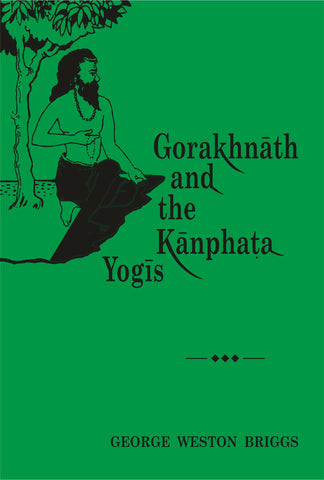
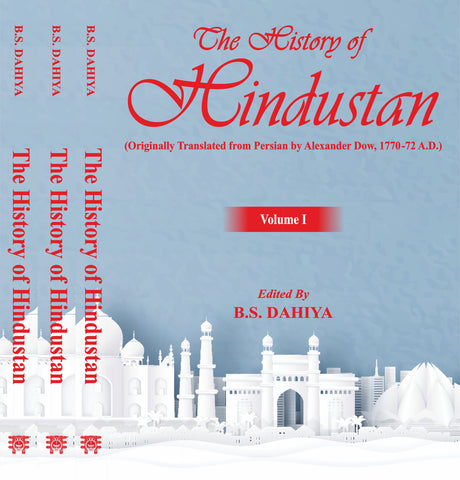
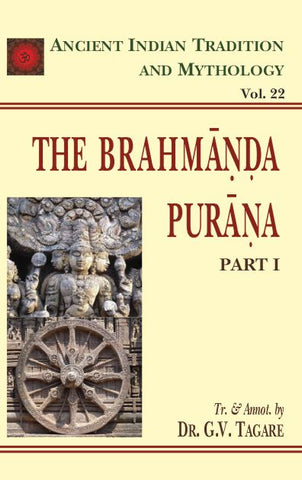
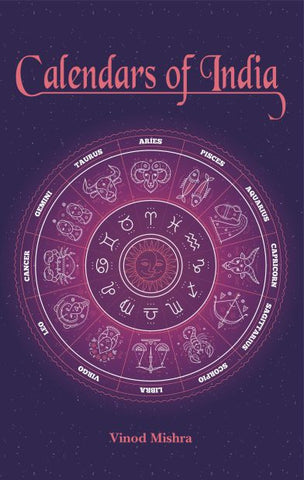
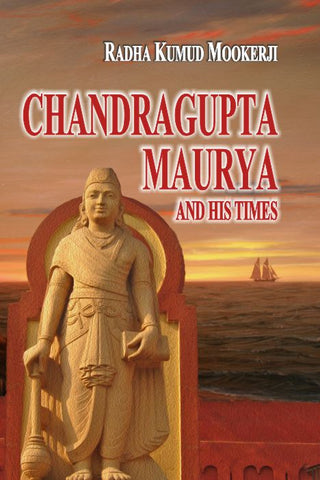
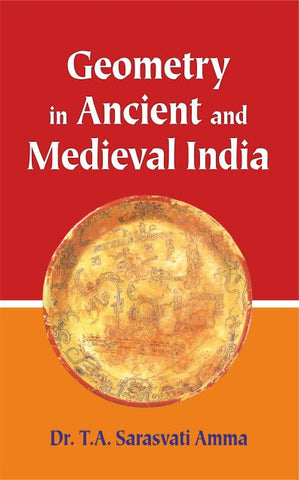
![A HISTORY OF INDIAN PHILOSOPHY [5 VOLUMES] by Surendranath Dasgupta](http://www.motilalbanarsidass.com/cdn/shop/products/HISTORYOFINDIANPHILOSOPHY_large.jpg?v=1675238163)
